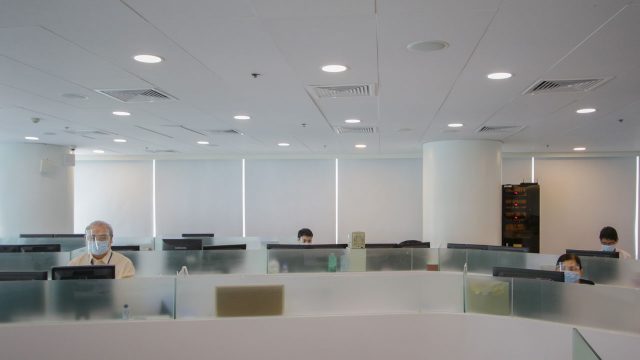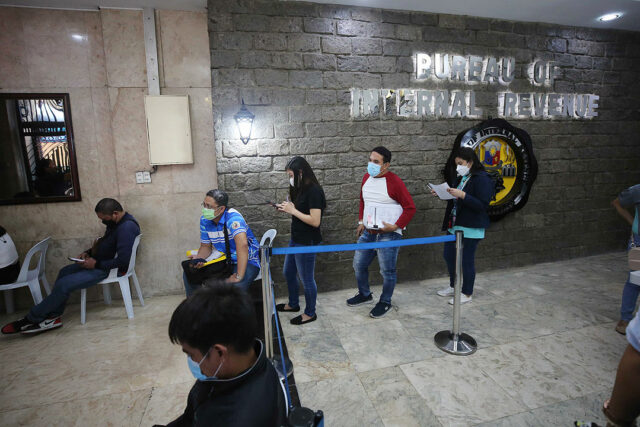By Kyle Aristophere T. Atienza, Reporter
THE PHILIPPINES should expand its assertive transparency strategy at sea and go as far as encouraging its neighbors to carry out a similar initiative, which has enabled the Southeast Asian nation to secure key security deals in the face of an increasingly aggressive China, a geopolitical expert said.
“I believe the Philippines should actively encourage other countries to engage in their own assertive transparency efforts across other regions and other domains,” said Raymond M. Powell, SeaLight director at the Gordian Knot Center for National Security Innovation at Stanford University, citing the need to cover air and cyber domains and detect illegal activities at sea such as illegal fishing and coral harvesting.
“China’s gray-zone aggression has thrived for years, and for now it can hope to defeat transparency by intimidating the Philippines,” he said in a Facebook Messenger chat.
“But if transparency is widely applied, Beijing will have to reconsider its tactics.”
In the assertive transparency initiative, the Philippines seeks to expose the alleged aggressive and illegal acts of Chinese vessels within Manila’s exclusive economic zone (EEZ) in the South China Sea and expose them to public view.
It was launched last year with an initial focus on Second Thomas Shoal, in which Manila grounded a Navy ship in 1999 following China’s seizure of Mischief Reef, which also falls within the Philippine EEZ.
Chinese Coast Guard vessels backed by maritime militia ships have been conducting dangerous maneuvers and deploying water cannons to block Philippine resupply missions for Filipino troops stationed on the rusting ship.
The assertive transparency campaign of Manila has also prompted more studies on environmental destruction in the South China Sea, as the Philippines raises alarm over coral destruction in some features within its EEZ.
The Center for Strategic and International Studies earlier reported that China had destroyed at least 21,000 acres (about 8,500 hectares) of coral reefs within the Philippine EEZ.
Another think tank, the Asia Maritime Transparency Initiative (AMTI), has also attributed coral reef destruction in the waterway to Chinese activities such as dredging to build artificial islands as well as clam harvesting, among others.
In late March, AMTI said Second Thomas Shoal, Luconia Shoals, Scarborough Shoal, Vanguard Bank, and Thitu Island were the five features most frequented by patrols of the Chinese Coast Guard last year.
Mr. Powell said the transparency initiative has largely helped the administration of President Ferdinand R. Marcos, Jr. secure key maritime partnerships with the United States and its allies in the Indo-Pacific region.
The US, Japan, Australia, and the Philippines last week held joint drills in the South China Sea, and US National Security Adviser Jake Sullivan recently said the region “can expect more of this.”
“On the naval patrols, we just saw trilateral plus Australia, a new form of quadrilateral joint naval patrols last week, so you can expect to see more of that in the future,” he said ahead of US President Joseph R. Biden’s meeting with Mr. Marcos and Japanese Prime Minister Fumio Kishida.
“This is an important development, and the credit belongs to the Marcos Administration for its bold policy of assertive transparency, which convinced the US and other democratic nations that robust support to the Philippines is central to countering Beijing’s regional aggression,” Mr. Powell said.
Japan recently donated 12 coast guard vessels to the Philippines and plans to provide five more.
The US would deploy a coast guard vessel to the Indo-Pacific region this year and
Philippine and Japan coast guard members were expected to be onboard, according to a joint statement by Mr. Biden, Mr. Marcos, and Mr. Kishida after their trilateral summit.
Their coast guards would conduct an at-sea trilateral exercise and other maritime activities “to improve interoperability and advance maritime security and safety.”
The three nations have also established a trilateral maritime dialogue “to enhance coordination and collective responses.”
“It’ll be prudent to continue with this, along with demonstrating commitment to the minilateral and bilateral initiatives cultivated by the Philippines with these partners via concrete actions, which range across the spectrum from economic to diplomatic to security dimensions,” said Collin Koh, a senior fellow at the Institute of Defense and Strategic Studies at Singapore-based Nanyang Technological University’s S. Rajaratnam School of International Studies.
“Being consistent and principled is key to dealing with grey zone aggression such as the one presented by Beijing.”
But Mr. Koh said it may not be suitable for Manila to actively encourage countries in the region to launch efforts similar to its transparency initiative because many of its Southeast Asian neighbors are highly concerned over their economic ties with China.
“Some if not all ASEAN neighbors, especially concerned parties in the South China Sea who have their fair share of concerns with China’s behavior would have already been watching closely,” he said.
“That said, they don’t appear keen to emulate Manila because they’re more concerned about avoiding to rock the boat in their lucrative relations with China, especially given the economic stakes involved,” he added.
The Philippines, Vietnam, Brunei, and Malaysia — which are all ASEAN members — as well as Taiwan and China hold different but in some cases, overlapping claims over some features in the South China Sea, which Beijing claims almost in its entirety.
Vietnam has also been openly standing up to China’s aggression at sea, but it has remained firm to its nonaligned foreign policy.
The policy of Hanoi, whose largest trade partner remains to be Beijing, is to “not let the maritime disputes damage the upward trajectory of China-Vietnam relations,” Khang Vu, a pre-doctoral fellow at the University of Notre Dame’s political science department, said in an article for The Diplomat last month.
The Philippines and Vietnam in February signed two agreements to prevent any untoward situation in the South China Sea and boost maritime cooperation among their coastguards.
“The risk of Manila being too active in lobbying its fellow ASEAN members to adopt the same strategy is that not only this may fall upon deaf ears and meet a wall of indifference or inaction, but it could even potentially contribute to further intramural divisions,” Mr. Koh said.
“For now, while Manila continues with its efforts, it’ll help for it to engage its ASEAN neighbors bilaterally and even in minilateral formats, especially focusing on practical maritime cooperation,” he added.
Mr. Koh said a loose collection of different national approaches to South China Sea disputes may be the best “suitable course of action going forward, considering how individual Asean capitals perceive and weigh their stakes in the issue.”
China is the Philippines’ largest source of imports and second-largest export market. As Manila has pursued closer security ties with the US and its allies, economic gains also take center stage, with Washington announcing a plan to establish an economic corridor on the Philippine main island of Luzon.
The Philippines last year gave the US access to four more military bases on top of the five existing sites under their 2014 Enhanced Defense Cooperation Agreement (EDCA), and US Defense Secretary Lloyd J. Austin told Mr. Marcos at the weekend that the Biden administration was seeking a $128-million budget to execute EDCA projects.
The two countries held their first Maritime Cooperative Activity within Philippine waters in November 2023, with the third leg done in February this year. The treaty allies are set to hold their annual Balikatan (shoulder-to-shoulder) exercises on April 22 to May 18, with the participation of 5,000 Filipino soldiers and 11,000 US military personnel.
For the first time, it will be held beyond the Philippines’ 12-nautical-mile territorial waters, according to the Philippine military.
The Philippines and its allies should build “material and non-material” maritime capabilities that would maximize Manila’s potential as a middle force, Joshua Bernard B. Espeña, vice-president at International Security and Development Center, said in a Facebook Messenger chat.
“With more partnerships for capacity-building, the next move is to show that the Philippines is now fighting back with its new toys backed by bigger friends,” he said.
“The key is more eased military assistance financing, economic corridors to support a defense industrial base, and a feasible logistics framework for a comprehensive yet sustainable external defense from the shore to the seas,” he added.











